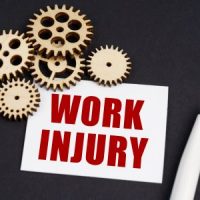Steps To Take After Suffering a Burn Injury at Work

Burn injuries can happen in any workplace, from restaurants and construction sites to offices and retail stores. Whether caused by hot surfaces or chemicals, burns can lead to long-term consequences. If you or someone you know suffered a burn injury at work, knowing the right steps to take can make a significant difference in recovery and potential compensation. In this blog, we discuss what to do immediately after a workplace burn and how to protect your rights.
Common Types of Workplace Burns
The most common workplace burns include:
- Thermal burns: These are burns that occur when one is directly exposed to hot surfaces, flames, steam, or hot fluids.
- Chemical burns: These types of burns result from exposure to corrosive substances like acids, cleaning agents, or harmful industry chemicals.
- Electrical burns: These burns occur when a worker comes into contact with an electrical current. The current can travel through the body, causing deep tissue damage.
The severity of burns is primarily categorized into three degrees, namely:
- First-degree burns that affect only the outer layer of the skin, causing redness and mild swelling
- Second-degree burns that penetrate deeper, causing blisters, intense pain, and sometimes scarring
- Third-degree burns that damage all layers of the skin and underlying tissues. These kinds of burns often require extensive medical treatment.
Immediate Steps To Take After a Workplace Burn
Regardless of the type or severity of a burn, one should take immediate action to prevent further complications. Here are the steps to take after a workplace burn:
- Get to safety: If you’re in immediate danger, move away from the source of the burn. If it’s safe, turn off any equipment or chemicals involved in the burn
- Assess the burn: Determine how severe the burn is. While first-degree burns can be treated with first aid, second and third-degree burns may require medical attention
- Cool the burn: If it’s safe, run cool (not cold) water over minor burns for 10-15 minutes to reduce pain and prevent further skin damage. This should not be done on electrical burns. Also, do not use ice, ointments, or butter on the burn.
- Cover the burn and seek medical help: Use a clean, dry cloth to protect the burn and get medical assistance immediately. Some burns may not appear serious at first but can worsen over time.
Reporting and Documenting the Injury
After receiving emergency care, you must report the injury to your employer immediately. Additionally, proper documentation is crucial as it can help in filing a workers’ compensation claim or if you need to take legal action. Specifically, here’s what you should do:
- Notify your employer: Inform your supervisor, manager, or HR department immediately about the injury. Delaying this step could affect your ability to receive compensation.
- Document everything: keep detailed records, including:
- The date, time, and location of the incident
- How the injury occurred
- Witness statements
- Photos of the injury and accident scene
- Copies of medical records and receipts
- File a workers’ compensation claim: If your burn injury requires medical treatment or time off work, you may be entitled to workers’ compensation benefits. Your employer should notify their insurance company about the injury within 72 hours of reporting, kickstarting the claims process. If you experience difficulty getting workers’ compensation, an attorney can help.
Contact Us for Experienced Legal Guidance
If you’ve suffered a severe workplace burn, contact our experienced Vermont workers’ comp lawyer at Sluka Law PLC at 802-457-1000 to help you understand your rights and seek the compensation you deserve.
Source:
labor.vermont.gov/workers%E2%80%99-compensation/injured-workers/claims-filing#:~:text=If%20your%20employer%20does%20not,a%20result%20of%20your%20employment.
